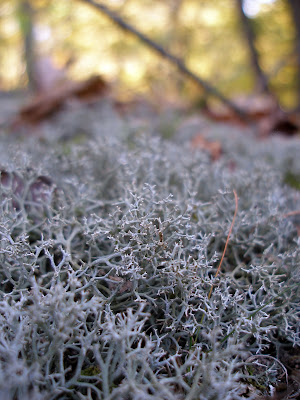 |
| Topographical map of Ohio with Knox County outlined. Adapted from the Ohio Department of Natural Resources (link). |
Of course lower elevation river valleys conduct glacial activity and the prominent Kokosing River flows eastward through the county. East of Mount Vernon is the little unincorporated community of Millwood and the Honey Run Waterfall area, owned by the Knox County Park District. It's a fantastic park with hiking trails and the only waterfall in Knox County. Honey Run empties directly into the Kokosing River in an area with excellent examples of blackhand sandstone, perhaps better known from the Hocking Hills area of Ohio. Surrounding the Honey Run park are ground moraines and terminal moraines of Illinois glaciation derivation. The blackhand sandstone formations in and along the Kokosing River appear to be Wisconsin rock terraces. This unique area in Knox County also provides local nature enthusiasts with a drastically different flora to study. Here we find a disjunct boreal habitat more often found in Canada today. There are large hemlocks that dominate the view of the waterfall, teetering precariously on sandstone cliffs. I always love going to this park for that not-of-this-state feeling with its aberrant geology and flora. It just doesn't feel like Ohio, or at least how I think Ohio should feel - you know, plains full of corn, wheat, and soy. It's true that's how much of Western Ohio appears, but here? Here is a little slice of Canada (or at least its typical boreal habitat) in the middle of Knox County.
And if you've never been to Ohio, I bet you always thought it was completely flat. Surprise!
 |
| Honey Run Waterfall in February. |
 |
| The Kokosing River at Honey Run, looking West. Notice the Blackhand sandstone on either side of the river. Taken in October. |

